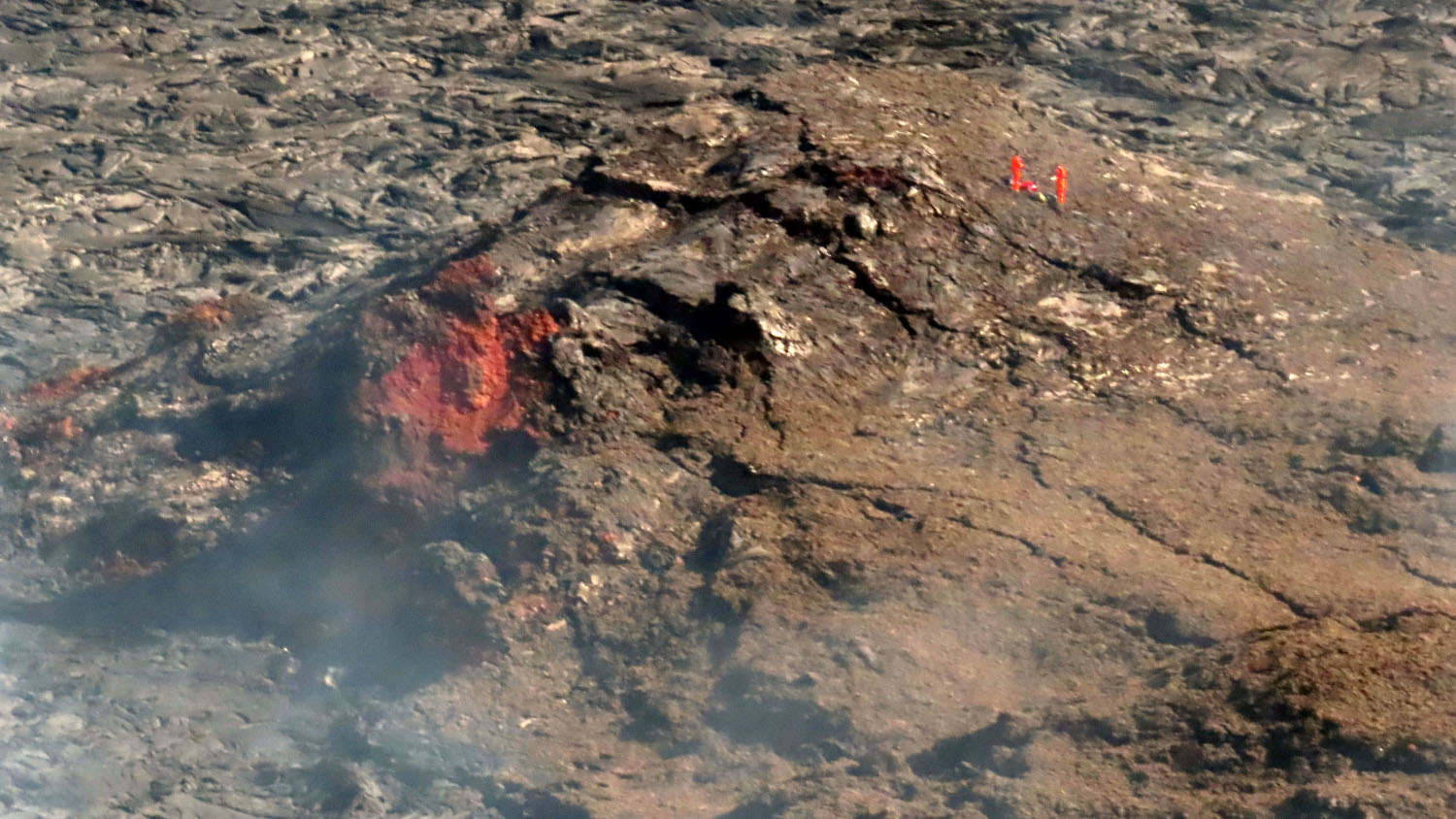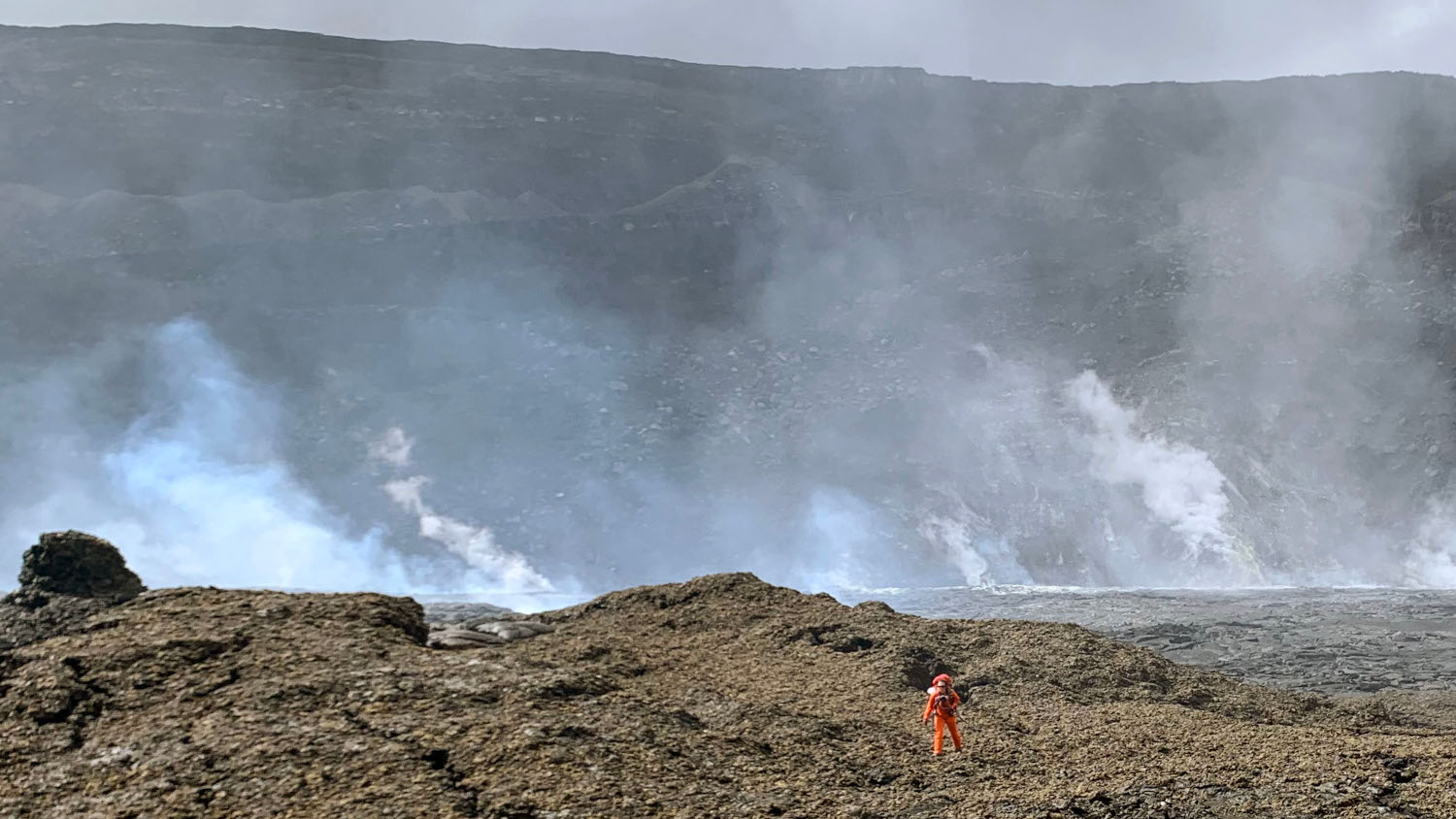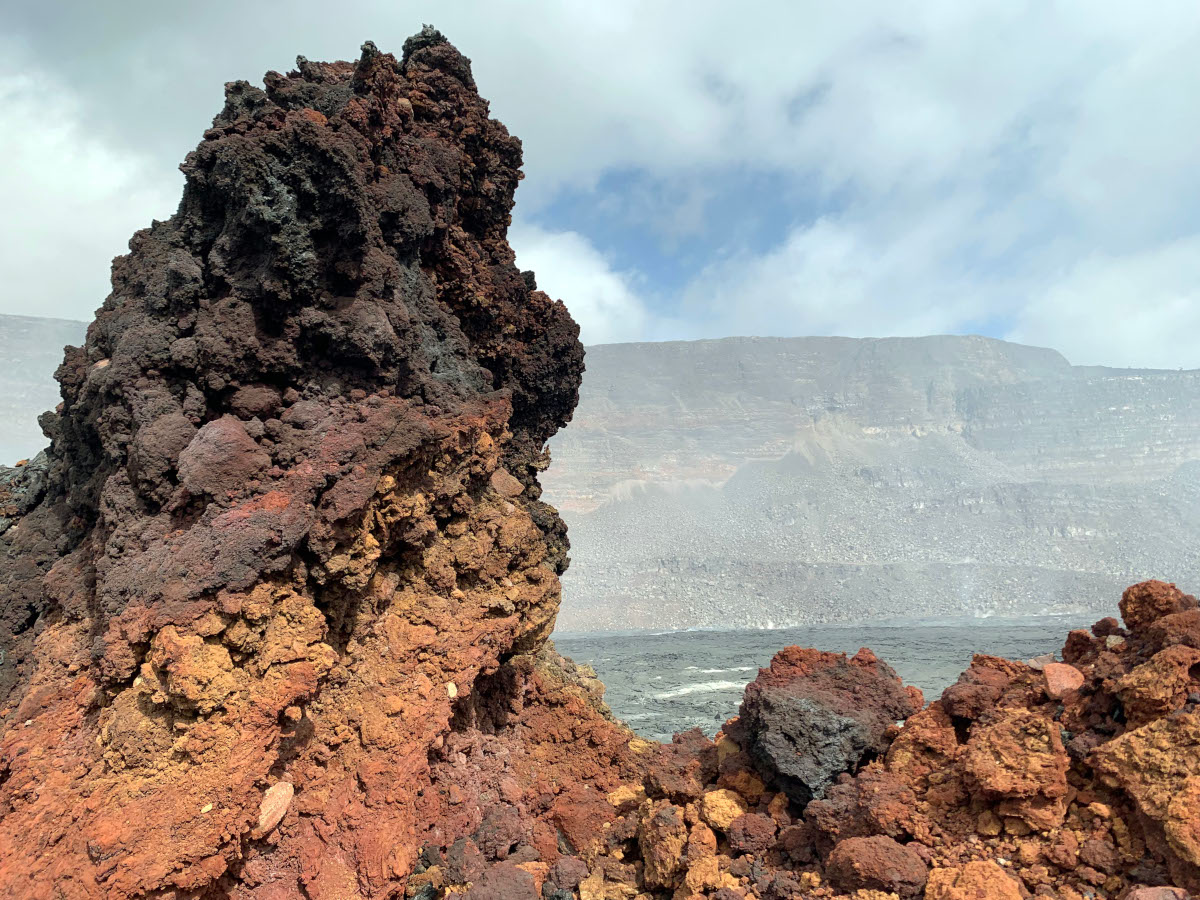
An aerial photo by USGS shows the December 2020 island and eastern vent area within Halema‘uma‘u crater. The Hawaiian Volcano Observatory crew can be seen in orange, working on the northwestern edge of the island. (USGS photo by J. Schmith)
(BIVN) – The eruption at the summit of Kīlauea volcano remains paused, and recently scientists visited the Halema‘uma‘u crater floor and observed no active lava present on the surface.
On March 10th, geologists from the USGS Hawaiian Volcano Observatory visited the summit, and – for the first time – set foot on the main island that was created during the initial hours of the December 2020 eruption.

USGS: “View of Halema‘uma‘u crater floor looking south and showing the island that formed during the December 2020 eruption (foreground) and crater floor (background).” (USGS photo by D. Downs)
“The geologists are studying the deposits on the surface of the island as well as the constituents of the island itself to learn more about the first part of the 2020 unique eruption, when lava encountered the water lake that was previously in Halema‘uma‘u crater,” the USGS HVO wrote. The island “has a thin surface of glassy spatter and tephra from the more recent Halema‘uma‘u eruptions that started in September 2021 and January 2023,” the geologists reported.

USGS: “Hawaiian Volcano Observatory geologists visiting Halema‘uma‘u crater floor on March 10, 2023. While there, they visited the island of tephra material that formed in December 2020. The island is a composite of red-yellow oxidized pieces that range from sand size to up to a few feet (about a meter) in diameter.” (USGS photo by D. Downs)
From the Kīlauea activity update by the USGS Hawaiian Volcano Observatory posted on Wednesday, March 15:
Activity Summary: Kīlauea volcano is not erupting. The summit eruption of Kīlauea volcano, within Halemaʻumaʻu crater, remains paused. Lava is no longer flowing on the crater floor. Resumption of eruptive activity at Kīlauea summit no longer appears to be imminent, although it is possible that another intrusion or resumption at the summit may occur in the near future with little or no warning. No significant changes have been observed along either of the volcano’s rift zones. Low rates of ground deformation and modest rates of seismicity continue across the volcano.
Halemaʻumaʻu Lava Lake Observations: No active lava has been observed over the past 24 hours. A live-stream video of the inactive western lava lake area is available at https://www.youtube.com/usgs/live.
Summit Observations: Uēkahuna tiltmeter is recording an inflationary tilt trend. We are near the peak of the “I” portion of a DI event. Seismicity has been at background levels since the end of the earthquake swarm on the afternoon of March 11. A sulfur dioxide (SO2) emission rate of approximately 250 tonnes per day (t/d) was measured on February 28.
Rift Zone Observations: No unusual activity has been noted along the East Rift Zone or Southwest Rift Zone; steady rates of ground deformation and seismicity continue along both. Measurements from continuous gas monitoring stations downwind of Puʻuʻōʻō—the 1983–2018 eruptive vent—in the middle East Rift Zone have been below detection limits for SO2, indicating that SO2 emissions from Puʻuʻōʻō are negligible.

by Big Island Video News5:03 pm
on at
STORY SUMMARY
HAWAIʻI VOLCANOES NATIONAL PARK - For the first time, geologists visited the main island that was created during the first hours of the December 2020 eruption.